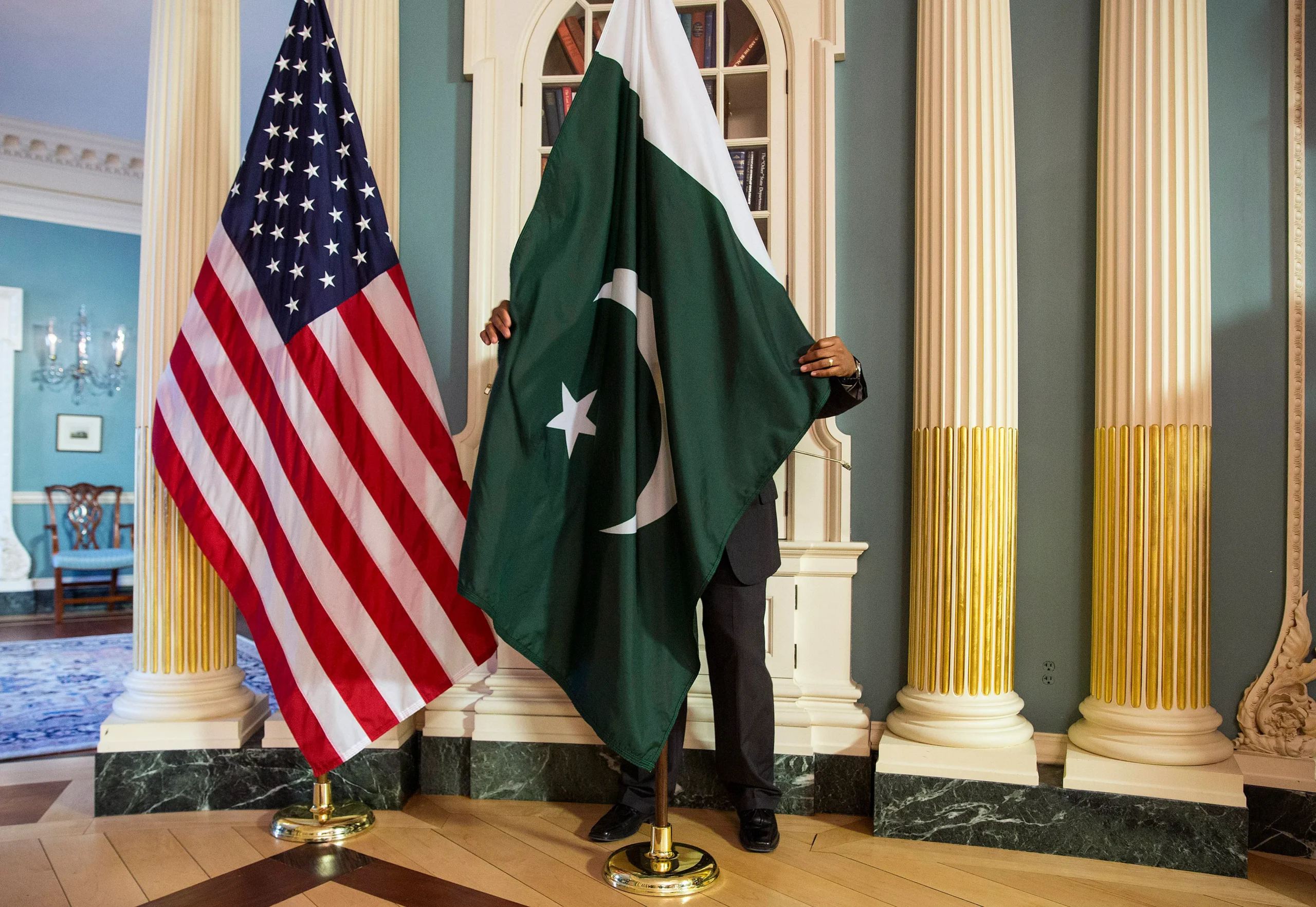Parag Khana, global strategy advisor, writes: “In the 19th century, the world was Europeanized. In the 20th century, it was Americanized. In the 21st century, the world is being irreversibly Asianized.” At the centre of this shift, the Indian Ocean—often considered the heart of Asia—holds immense, perhaps even greater, significance as a strategic and economic hub. The Indian Ocean is fast becoming the world’s newest strategic hotspot, with powerful nations jostling for influence. From the strategic military significance of Diego Garcia to Pakistan’s own AMAN Exercise, this region is now a critical arena for both competition and cooperation.
Geo-Strategic Significance of the Indian Ocean
The Indian Ocean has been a vital trade route for centuries, currently facilitating one-third of global bulk cargo traffic and two-thirds of oil shipments. Home to nearly 2.7 billion people, its economy contributed 10.7% of global GDP in 2017 and is projected to reach 20% by 2025. Spanning three continents, its diverse maritime geography includes sub-regions such as Australasia, Southeast Asia, South Asia, West Asia, and Eastern and Southern Africa.
With known reserves of over 65% of world oil and 35% of the world’s gas in the littoral states, the Indian Ocean is the epicenter of the maritime economy. Key chokepoints such as the Strait of Hormuz, the Strait of Malacca, and the Bab el-Mandeb make it a lifeline for global energy, commerce, and military presence. The navies of the United States, United Kingdom, Russia, China, India, and Pakistan, therefore, maintain a robust military presence in the Indian Ocean.
India’s Ambitious Plans in the Indian Ocean’s Strategic Shift
India’s expansion of its naval power and maritime buildup is centered around its assumed role as a “Net Security Provider“ in the Indian Ocean Region (IOR), which has raised concerns about regional stability and security. India’s maritime capabilities include a 7,500-kilometer coastline, 12 major ports, 217 non-major and minor ports, along with a strong banking and maritime insurance infrastructure.
With the third-largest military in the world and a defence budget of $75 billion for 2024–2025, India is making significant strides in its naval aspirations. This includes the acquisition of 170 vessels, two Arihant-class nuclear-powered submarines, and two aircraft carriers—INS Vikramaditya and INS Vikrant. On August 29, 2024, India also commissioned its second Arihant-class nuclear submarine, INS Arighaat. Additionally, by 2047, India plans to establish 11 military bases across the IOR, to enhance its military self-reliance and produce its military equipment. As India seeks to assert its dominance, there are fears that this could threaten the sovereignty of other nations in the region.
Also See: The Indian Ocean: The Great Game Moves to the Seas
US-China Rivalry in the Indian Ocean
The Indian Ocean has emerged as a focal point in contemporary geopolitics, where the United States and China are positioning themselves as dominant powers, while other emerging, medium, and small nations align with one or the other. Both great powers have significantly intensified their interests in the region. The U.S. signalled its focus through President Obama’s Pivot to Asia and President Trump’s Indo-Pacific strategy, which would likely gain further momentum during his second term.
As both nations view the region as central to their strategic objectives, military and economic activities have escalated. The U.S. maintains a robust presence in the Indo-Pacific, while China’s Belt and Road Initiative (BRI) continues to reshape maritime trade and infrastructure across the Indian Ocean littoral states. India’s aspirations as a regional leader, along with Japan’s growing interest in regional stability, have collectively transformed the Indian Ocean into a nexus of competing security interests.
A unique aspect of China’s engagement is its diplomatic footprint in the region. China maintains embassies in all six key island nations of the Indian Ocean—Sri Lanka, Maldives, Mauritius, Seychelles, Madagascar, and Comoros—a distinction not shared by traditional powers like the U.S., UK, India, or France. Moreover, China faces fewer territorial or sovereignty disputes in the region compared to these traditional players, whose rivalries often stem from the complex legacies of decolonization.
Beyond diplomatic and economic ties, China has also established a growing military presence. Since 2008, Beijing has deployed its navy on anti-piracy missions in the Gulf of Aden, signaling a broader security role. Moreover, China’s ambitious Belt and Road Initiative and the inter-linked investments in strategic port infrastructure, such as Gwadar in Pakistan and Hambantota in Sri Lanka enhance both its commercial and military access. This has raised concerns, particularly in India and the United States, regarding China’s expanding influence.
In contrast, the United States maintains a strategic presence in the Indian Ocean through its military base on Diego Garcia, a crucial asset for projecting power in both Asia and the Middle East. The base underscores the U.S. commitment to countering China’s growing influence. Additionally, the Indian Ocean serves as a key transit route for U.S. naval forces, linking its 5th fleet based in Bahrain with the 7th fleet in Japan.
US-India Partnership viz-a-viz Indian Ocean
India is the key partner of the US in its interests and developments in the Indian Ocean region. Under Prime Minister Narendra Modi, both countries have increasingly aligned their strategies and priorities in the region, particularly in response to shared concerns over China’s growing influence. This partnership has been bolstered through mechanisms like the Quadrilateral Security Dialogue (QUAD) and platforms such as the Indo-Pacific Economic Framework (IPEF).
In the last decade, India and the U.S. have found common ground in their interests in the Indo-Pacific, with bilateral relations steadily converging on key issues including strategy, policy, the QUAD, China, and commercial initiatives. India’s ‘Act East’ policy, its articulation of the “Indo-Pacific” concept, and the Indo-Pacific Oceans Initiative have all contributed to deepening the India-U.S. relationship in the region, both bilaterally and through trilateral and multilateral engagements, especially within the Quad.
India has also expressed optimism over the UK and Mauritius announced a historic agreement resolving their 50-year dispute over the sovereignty of the Chagos Archipelago in October 2024. While the deal ended British control over the islands, it preserved the U.S. military base on Diego Garcia for at least 99 years, a strategic asset pivotal to U.S. interests in the Indian Ocean. The agreement also permits Chagossians, exiled in the 1960s and 70s, to return to smaller islands, though access to Diego Garcia remains restricted. This island, the site of a major US military base, gives Washington the latitude to ensure its naval presence in the Indian Ocean region to balance China’s naval footprints.
During the 1960s and 1970s, India strongly opposed the establishment of Diego Garcia as a US military base under the UK-US agreement of 1966, viewing it as a threat to its vision of an “area of peace” in the region. Concerns were heightened after the 1971 Bangladesh crisis, when the USS Enterprise entered the Indian Ocean, reinforcing India’s apprehensions about foreign military interventions near its borders. India, along with other non-aligned nations, condemned the militarization of the region, citing the UN and Lusaka Declarations that called for the Indian Ocean to be free from great-power rivalry.
However, the rise of China and the intensification of great-power competition have prompted a significant strategic shift. Recognizing its limitations in securing the region alone, India now views the US presence in Diego Garcia as a crucial counterbalance to China’s expanding naval footprint. Washington’s role aligns with New Delhi’s broader security objectives, helping to maintain a favourable balance of power in the region.
Most recently, India and the U.S. inaugurated the U.S.-India Indian Ocean Dialogue on Thursday, November 14, 2024, through a virtual format. The dialogue was aimed at addressing common security threats and strengthening their mutual partnership in the region.
Pakistan’s AMAN Dialogue: The Only Hope in Conflictual IOR Politics
Amid significant geopolitical developments in the Indian Ocean, Pakistan is set to host the AMAN Dialogue in 2025, alongside the multinational AMAN Exercise. Pakistan’s strategic position near the Strait of Hormuz and the Arabian Sea makes it a key player in global maritime trade and security.
The Dialogue will address critical issues in the Western Indian Ocean, a region marked by tensions like US-Iran relations, the Yemen crisis, and instability in Afghanistan and Syria. These challenges highlight the need for multilateral efforts to develop region-specific solutions. The themes “united by tides” and “knotted by oceans” reflect the Dialogue’s focus on the shared fate of maritime nations and the importance of collaboration in navigating contested waters.
Topics will include the evolving security landscape, the impact of advanced technologies on maritime operations, and non-traditional threats such as piracy and trafficking. The Dialogue will also explore the blue economy’s potential for sustainable growth and the role of humanitarian aid and disaster relief. Senior naval officers will share diverse perspectives on enhancing regional security and ensuring peaceful freedom of navigation.
Since 2007, the Pakistan Navy has hosted the biennial AMAN exercise, with over 50 countries participating in the most recent event in February 2023. Under the motto “Together for Peace,” the exercise consists of two phases: a harbour phase featuring operational discussions, seminars, and cultural exchanges, and a sea phase focused on interoperability in anti-piracy, air defence, and counterterrorism operations.
As the tides of the Indian Ocean continue to shape global dynamics, the AMAN Dialogue emerges as a symbol of Pakistan’s commitment to fostering peace, unity, and collaboration in the region. This biennial multinational maritime exercise stands as a testament to Pakistan’s positive diplomatic approach towards dealing with regional geopolitics. It serves not only as a platform for naval forces to conduct joint operations but also as a vital reminder to all nations that only through unity and cooperation can a peaceful, prosperous maritime future be achieved.
The views expressed in this article are the author’s own. They do not necessarily reflect the editorial policy of the South Asia Times.

![From India’s naval rise to the US-China rivalry and Pakistan’s upcoming AMAN, the Indian Ocean is becoming a new battleground for global influence. [Image via Alamy]](https://southasiatimes.org/wp-content/uploads/2024/12/20230415_ASP001.webp)





